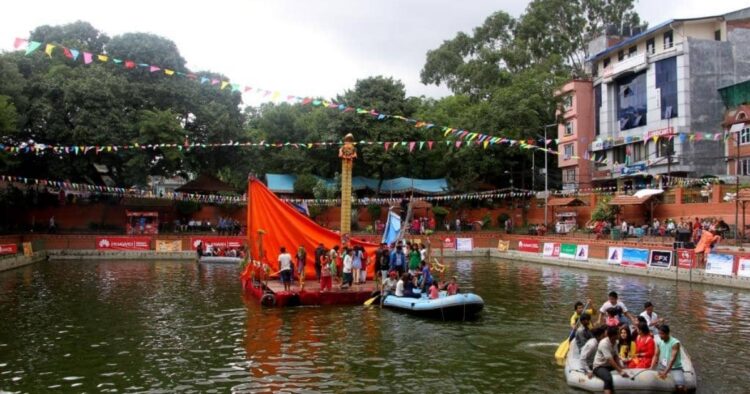The vibrant festival of Naag Panchami, deeply rooted in Hindu tradition and mythology, was celebrated with great fervor across Nepal on the fifth day of the bright half-moon of the Shrawan month, as per the lunar calendar. Marking the onset of the festive season in the Himalayan nation, hundreds of devotees gathered at the sacred pond “Naag Pokhari” in Kathmandu to offer their prayers to the serpent deity, symbolizing the strong bond between humans and nature.
Naag Panchami, a day dedicated to the worship of serpent deities, holds a special place in the hearts of Hindus. This festival is believed to have its origins in the ancient epic Mahabharata, where a mighty serpent named Kalia poisoned the waters of the Yamuna River, endangering the lives of the villagers.
According to the legend, Lord Krishna, in his divine form, tamed Kalia and restored peace, ensuring the safety of the people. This tale has been passed down through generations and is now celebrated annually as Naag Panchami.
In the capital city of Kathmandu, devotees thronged Naag Pokhari, a pond dedicated to the serpent deity, where they performed rituals to honor the serpentine gods. They offered milk, sweets, vermillion powders, and flowers to the deity, seeking blessings for prosperity, protection, and the well-being of their families. The atmosphere was filled with devotion as people immersed themselves in the age-old customs and traditions that have been practiced for centuries.
The significance of Naag Panchami extends beyond mere serpent worship. It is also a festival that highlights the harmonious relationship between humans and nature. On this auspicious day, farmers refrain from digging or ploughing their fields as a mark of respect to the serpent deity. Instead, they worship the deity by creating idols from the mud of their fields, symbolizing their reverence for the natural world. This practice reflects the deep connection between agricultural life and religious beliefs in Nepalese culture.
The serpent deity is also regarded as the god of water and rain, essential elements for the sustenance of life. According to religious beliefs, a household where the Naag deity is worshipped is blessed with wealth, prosperity, and abundance. This belief is rooted in an ancient tale where a farmer, who accidentally killed a family of serpents while ploughing his field on Naag Panchami, faced the wrath of the serpents.
ALSO READ: “Akshaya Tritiya 2024: Know About The Significance Of Festival”
The story goes that the serpents vowed to take revenge on the farmer’s family but spared his daughter, who was worshipping the serpent deity when they came to her home. Moved by her devotion, the serpents blessed the girl and her family, setting the precedent for the festival.
As Nepal celebrates Naag Panchami, the festival serves as a reminder of the importance of maintaining a balance between human activities and the natural world. It underscores the belief that respecting and honoring nature brings prosperity and harmony to society. With its rich history and cultural significance, Naag Panchami remains a cherished tradition in Nepal, connecting the present generation to the ancient tales and rituals that have shaped their heritage.

















Comments